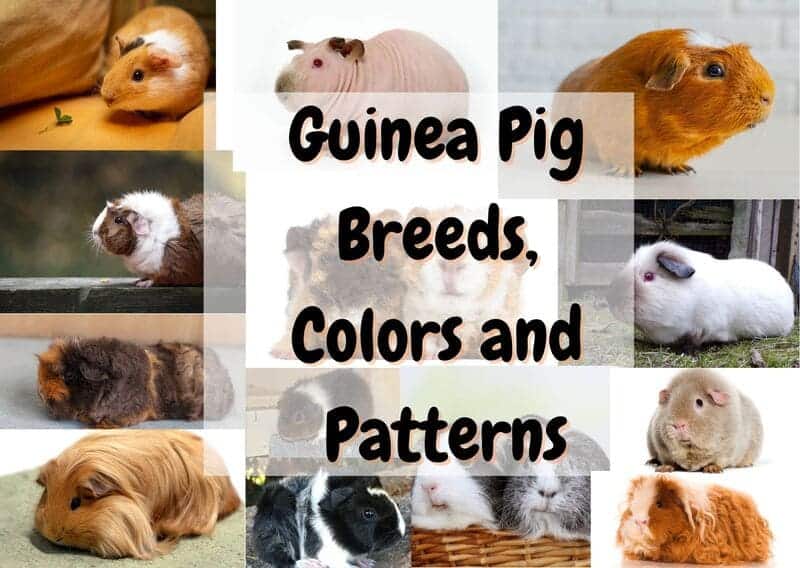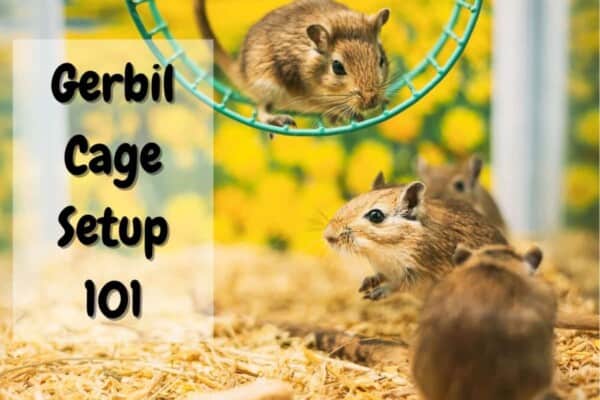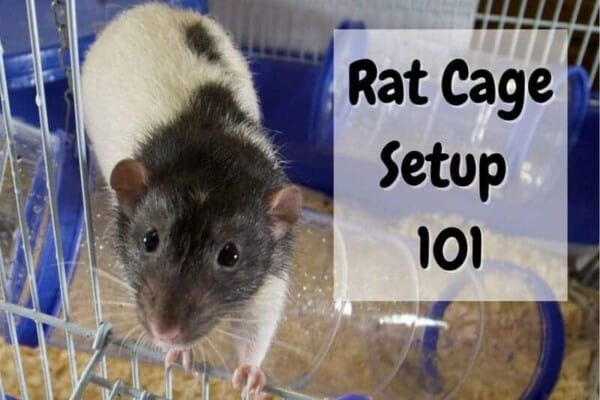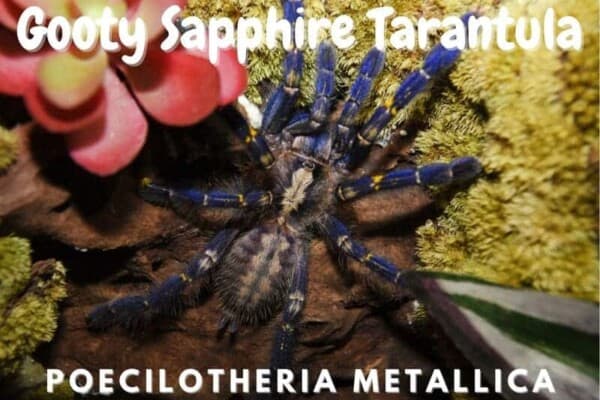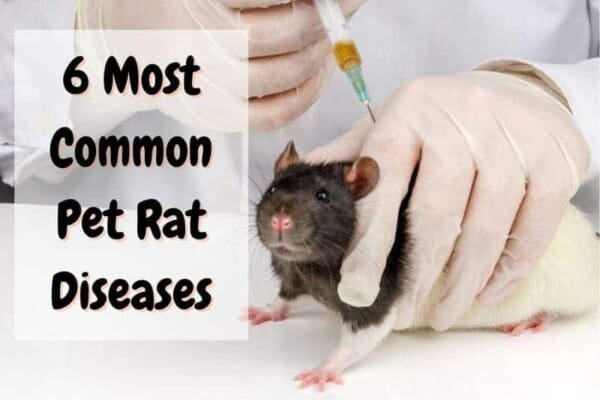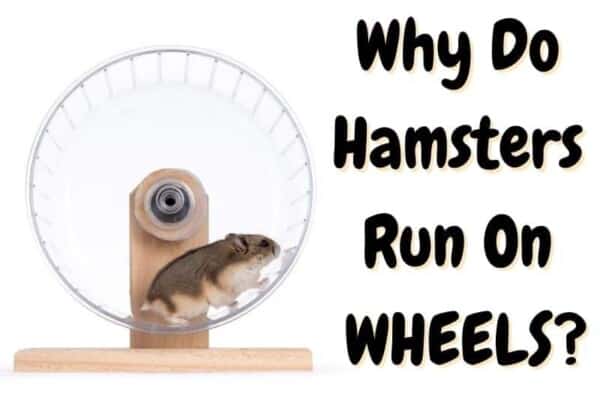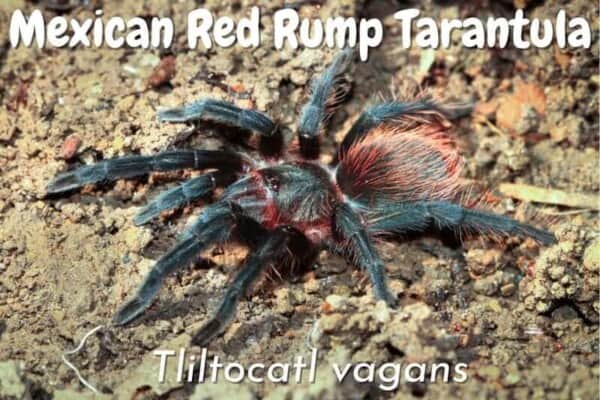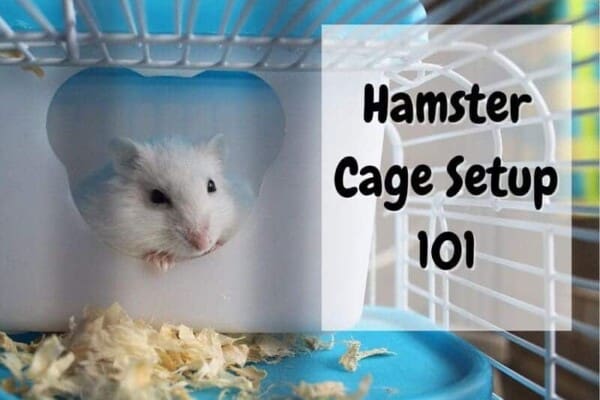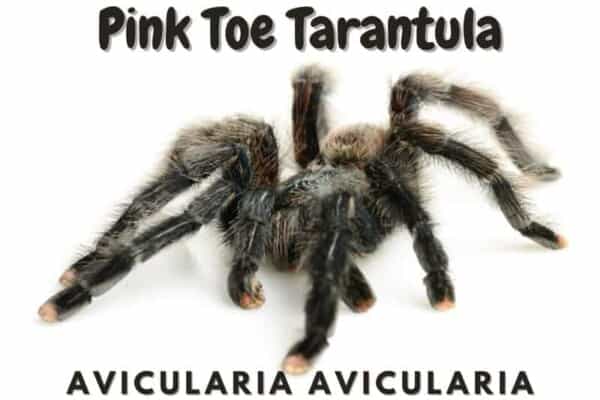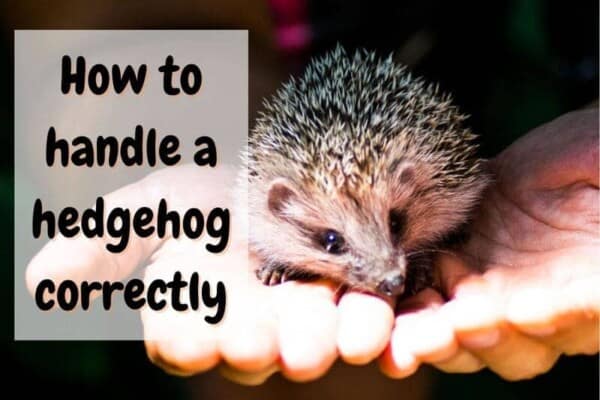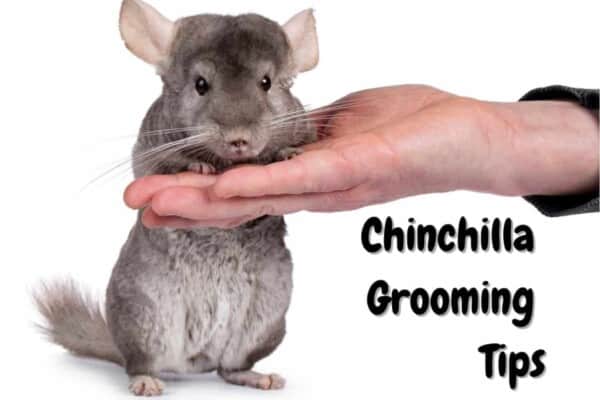How much do you know about the different breeds and colors of guinea pigs? In fact, there are 15 different breeds with many colors and mutations in between. Finding the best breed for you is what you will learn about in this unique guide.
Guinea Pig Breeds A-Z
1- American Guinea Pig (aka English Cavy)
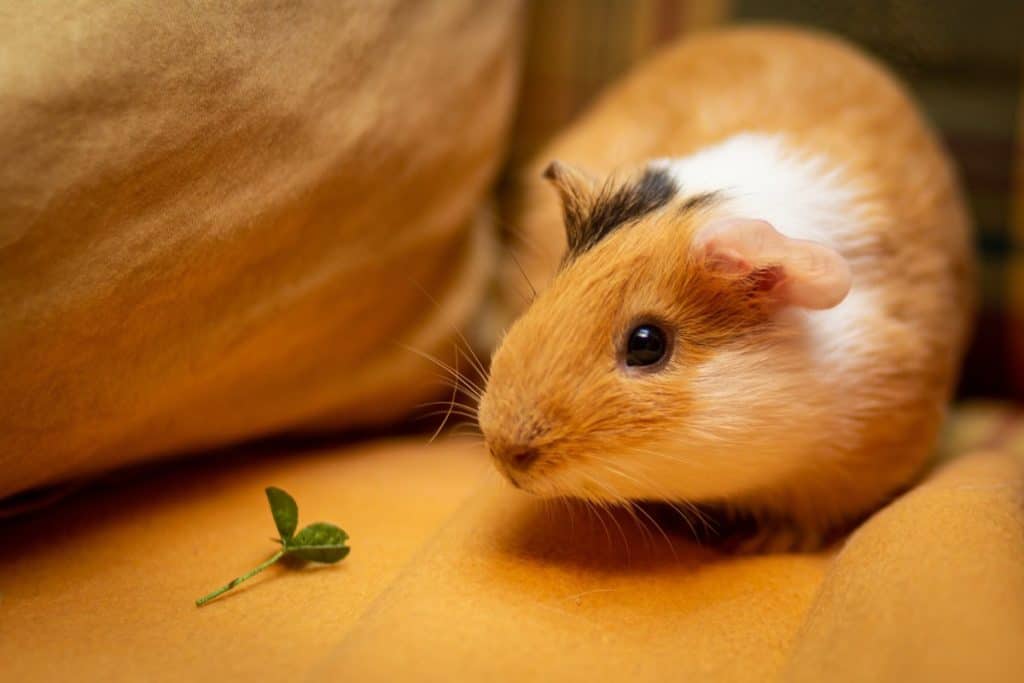
The American Guinea Pig is an easygoing breed that can live a very long life. This makes them a good choice since they live longer than most cavies. The satin version is more problematic and will have health issues because of how it was bred.
2- Abyssinian Guinea Pig
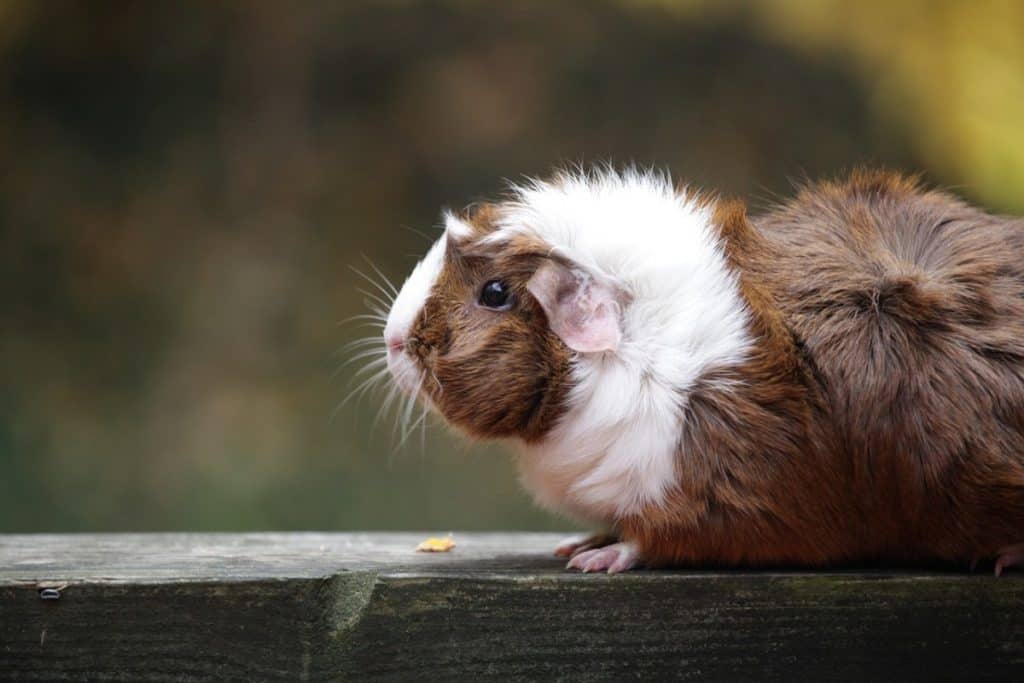
The number of rosettes that cover your average Abyssinian guinea pig can get pretty specific. Most collectors want to see 8-10 of the rosettes covering a guinea pig’s body. This breed is temperate and recommended for advanced owners who raised guinea pigs before.
3- Alpaca Guinea Pig
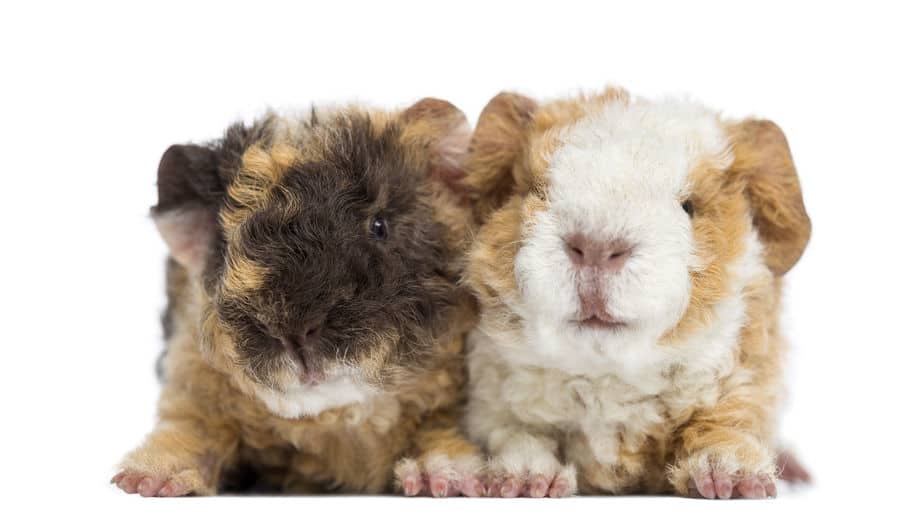
The Alpaca breed of guinea pigs was first bred in England and has thick and wavy fur all over its body. This breed can live up to 8 years and make them perfect for long-term owners. These are also ideal for novice and advanced owners.
4- Baldwin Guinea Pig
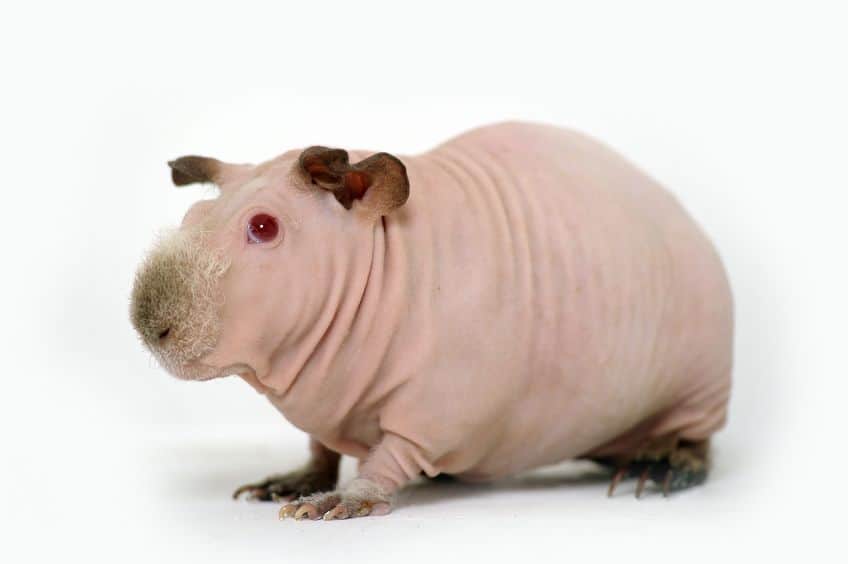
If you want to see the real-life Benjamin Button effect, raising the Baldwin guinea pig is often quite an experience. It is born with normal fur but starts to lose its hair by the time they are two months old. Most Baldwins are only sold to the public after the very end of their shedding.
5- Crested Guinea Pig
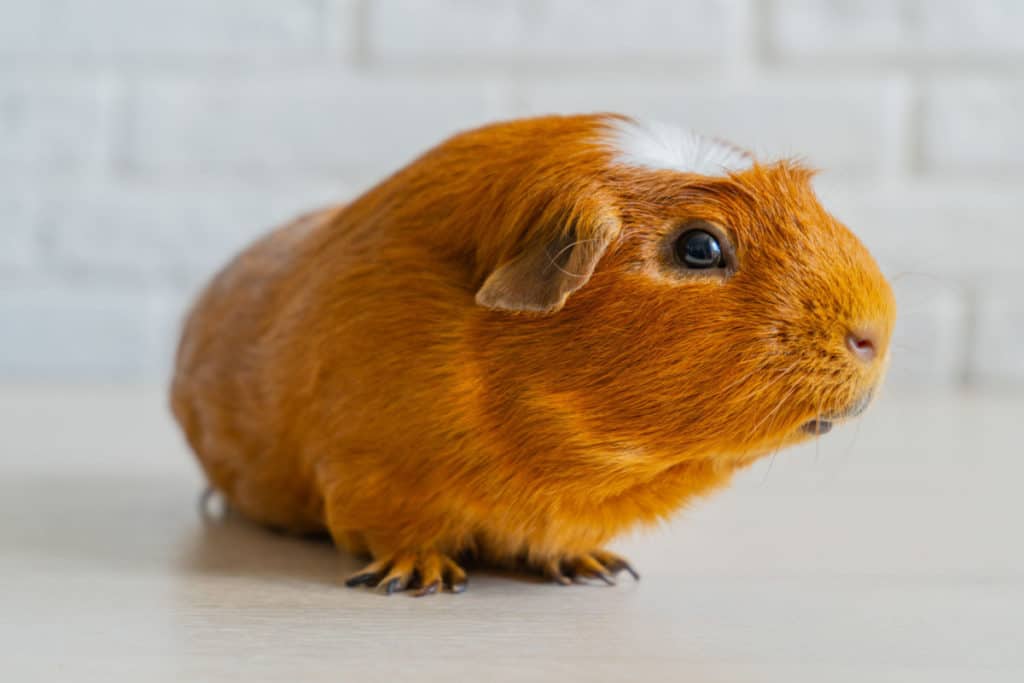
Crested guinea pigs are good guinea pigs to own and come in a wide variety of colors. Because they have a white crest on their forehead, it looks like a deliberate ‘cowlick’ or ‘bedhead’. Some guinea pig owners will have selective colors that are more desirable than others of this breed.
6- Himalayan Guinea pig
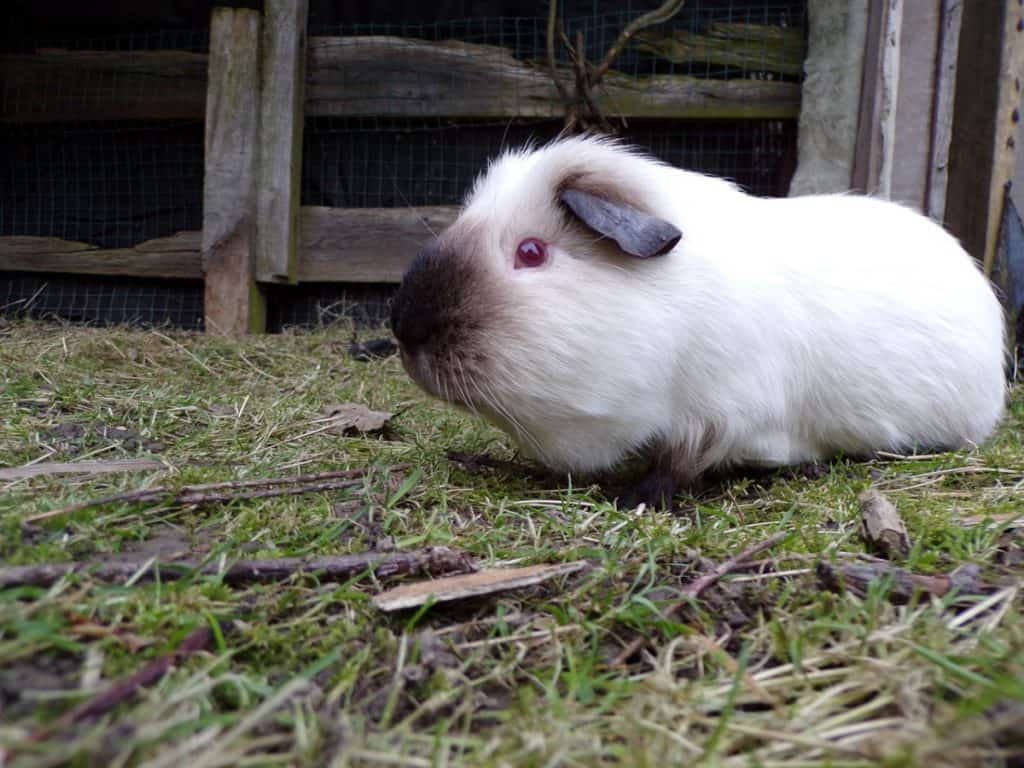
Himalayan guinea pigs are more sensitive to sunlight than other guinea pigs, so they need a controlled lighting habitat. You can’t take them outside too often for this reason so they will spend most of their life indoors only. These also need experienced guinea pig owners who know how to deal with this breed.
7- Magpie Guinea Pig
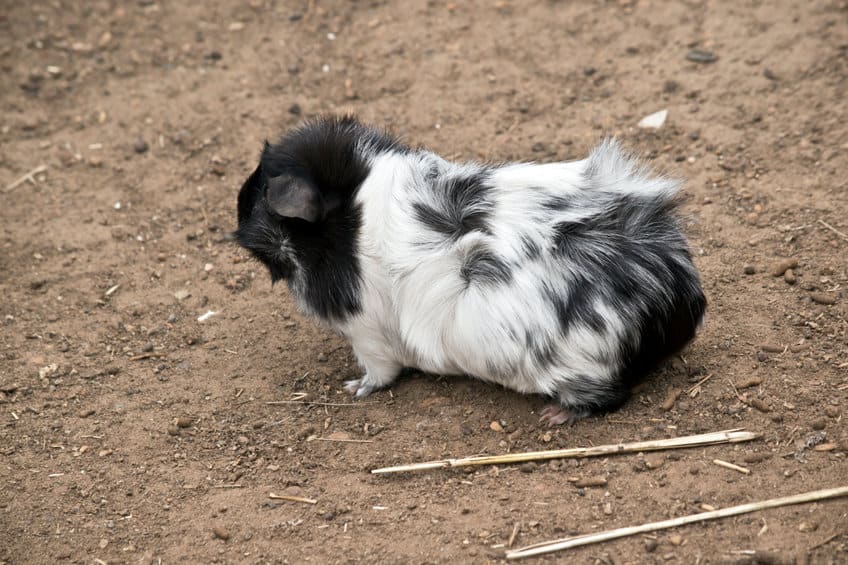
Magpie guinea pigs have black and white stripes and patches that remind the colors of a magpie bird. You don’t see these too often and that is why they are considered rare. These colors are balanced on both sides of their body, giving their coloring more appeal.
8- Merino Guinea Pig
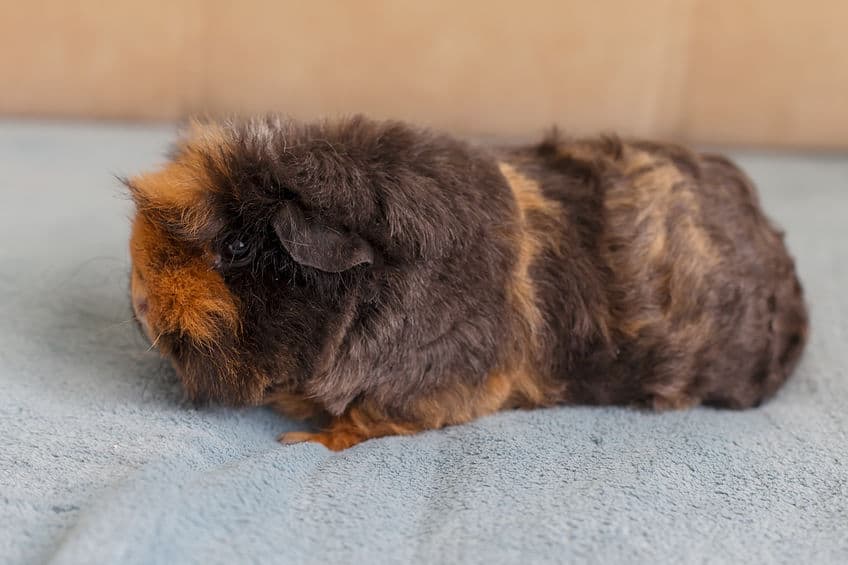
The Merino guinea pig is another curly hair breed that has short and spongy fur making them feel like a squeeze toy. This breed also features a crest on its forehead like the white-crested guinea pig.
9- Peruvian Guinea Pig
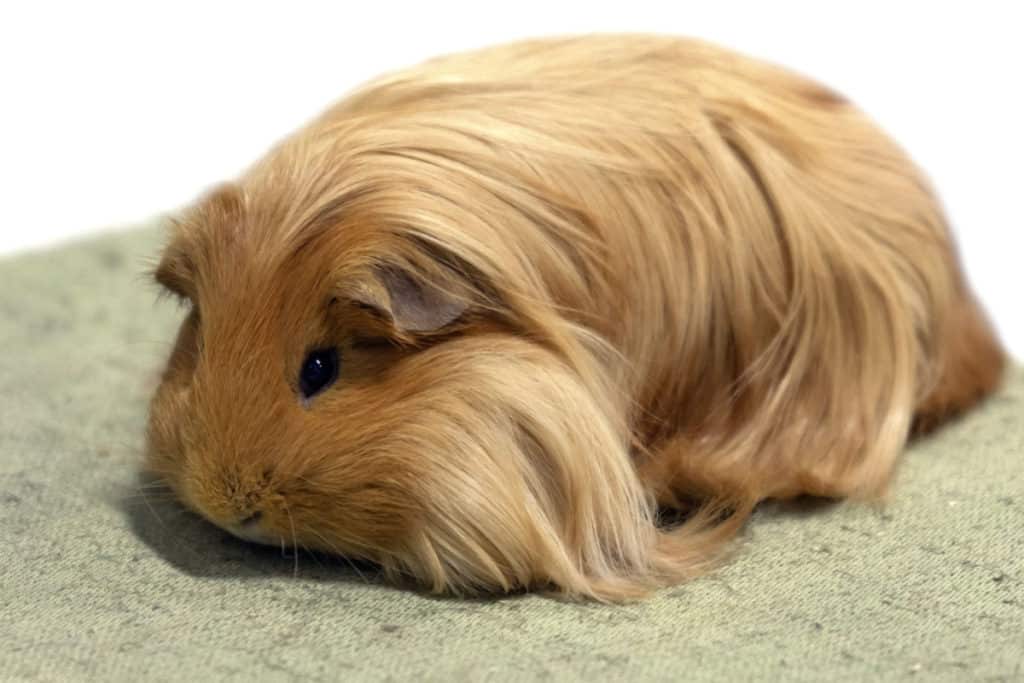
The Peruvian guinea pig is a special breed that was an innovation that goes back to French and English guinea pig breeders. Their long and soft coat can grow very long and needs continual trimming and grooming. These are better for experienced owners who like grooming their pigs.
10- Rex Guinea Pig
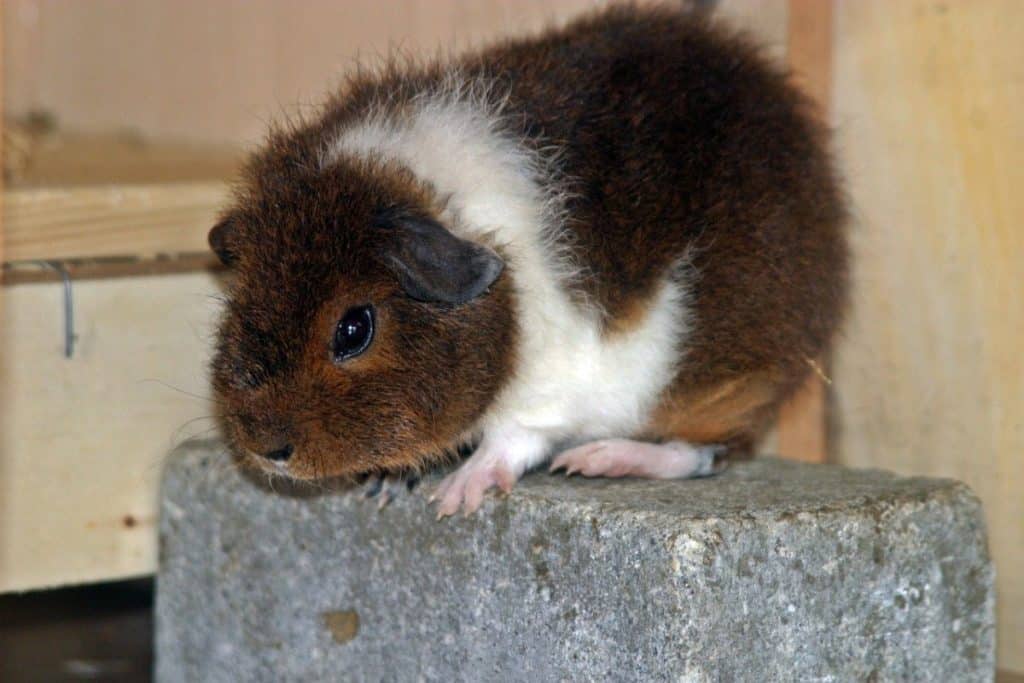
Rex guinea pigs are a great breed for novice guinea pig owners. They live at least 6 years and they have a wooly appearance. They are also the type that needs good grooming to keep them this way. Rex breeds are easygoing and have friendly dispositions otherwise.
11- Silkie Guinea Pig
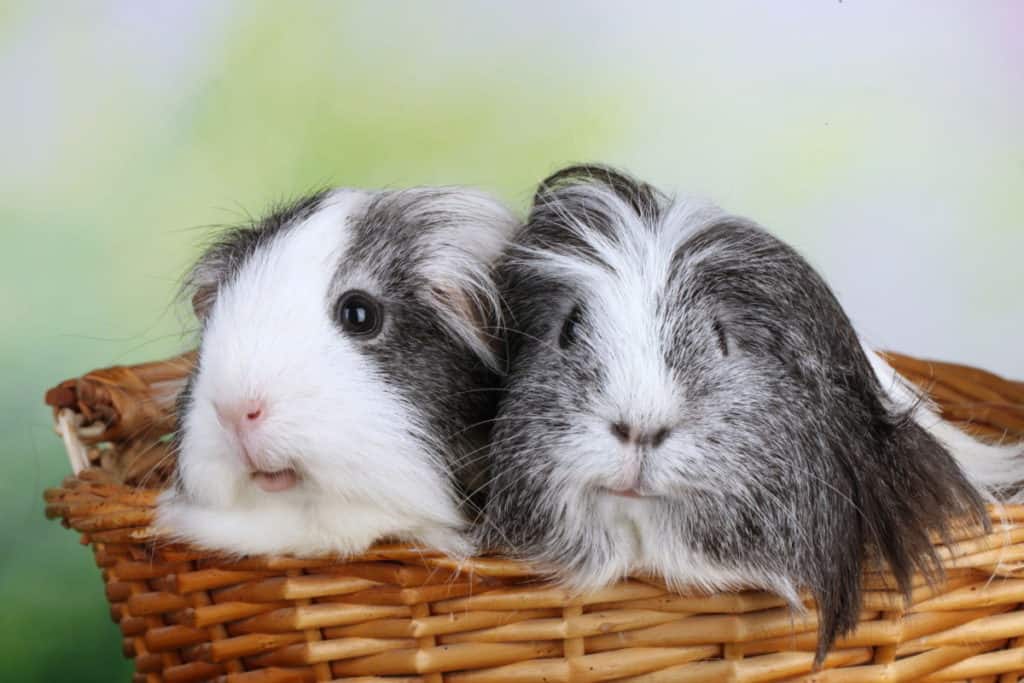
Silkie guinea pigs do need to have regular grooming since their hair is long. This breed also goes by the name Sheltie in the UK and is collectible if they have a teardrop body shape. These require an owner who is familiar with guinea pigs but they are tolerant of first-time owners.
12- Sheba Guinea Pig
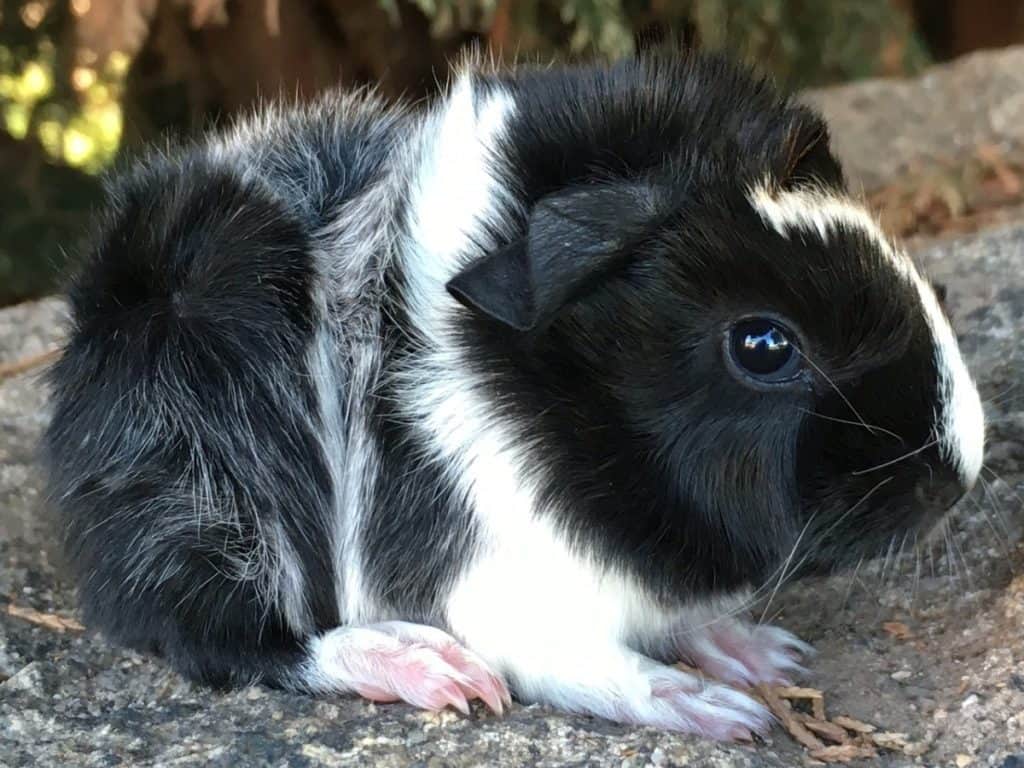
The Sheba guinea pig is a breed that is also called a Mini Yak due to its wooly appearance. It also can be called the Bedhead’ pig because its hair is full of rosettes on its back. It originated in Australia and crosses an Abyssinian and a Peruvian guinea pig.
13- Skinny Guinea Pig
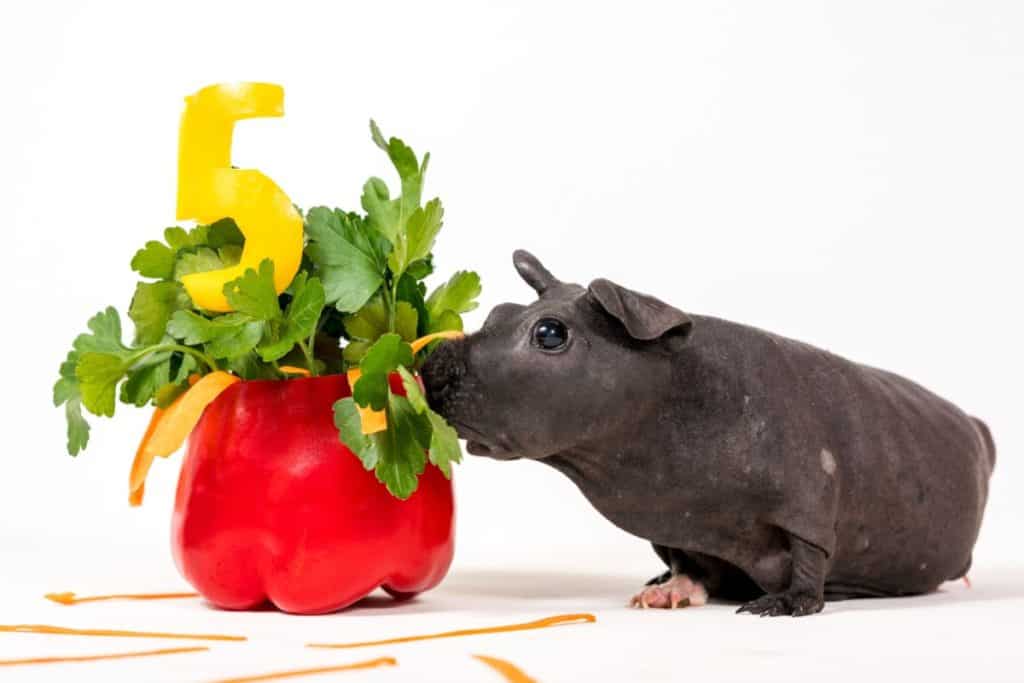
Skinny pigs are genetically possible through science and were bred to be hairless for testing in the laboratory. The early versions of these pigs were problematic and suffered from bad health. Newer, improved skinny pigs live longer but need special habitats so they don’t get sick.
14- Teddy Guinea Pig
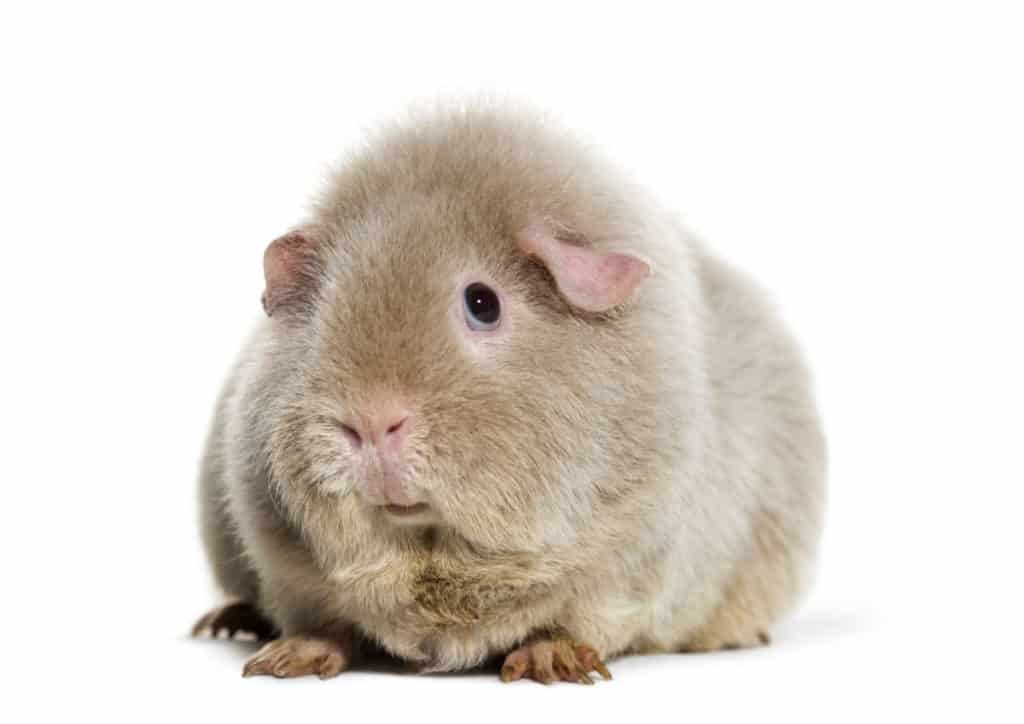
Teddy guinea pigs are great for beginners and make a good choice based on appearance. What you need to know is that these guinea pigs need lots of grooming since their belly fur is also long. You will need to have a good grooming brush so their fur stays soft.
15- Texel Guinea Pig
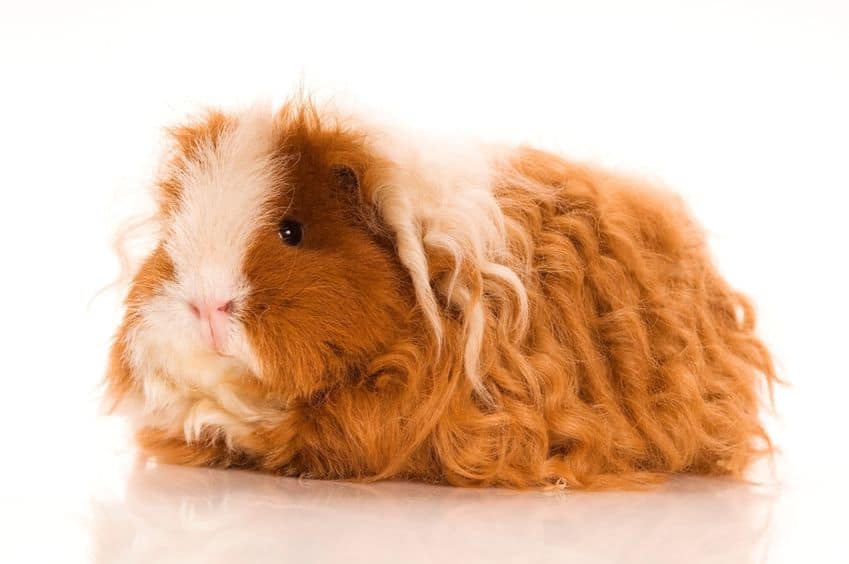
Texel guinea pigs come from England and mix the Silkie and Rex breeds to make this guinea pig so different looking. It also needs a lot of grooming to keep its fur from getting tangled. Without grooming regularly, their hair will look matted and need to be cut off.
What colors do guinea pigs come in?
- Agouti: This type is described as short and silky hair that has a second color mixed in. There can also be flecks of color scattered throughout their coat. Most of the common colors include cream and chocolate, but also include silver, cinnamon, gold, and lemon.
- Albino: The most obvious of all the colors is a pure white that has characteristic pink eyes. Albino pigs can turn up more often in pet stores and are very common as a breed. These aren’t limited to finding the albino skinny pigs as well that have small patches of white fur on their nose or feet.
- Belted: This is a special color that has a smooth coat with a single ring of color below the shoulder. It resembles a belt since it can be seen between the front and back legs. More often this breed has smooth black fur with a lighter-colored belt ring.
- Bicolor: You will find this breed has a smooth coat with two colors that have checkered square patterns and patches. You will find these along their top and underside. These patterns are more attractive looking on the short-hair guinea pigs.
- Brindle: When colors start to intermingle between two colors, this is called brindle. For example, you will see light colors and dark colors that are consistent everywhere on their body. These streaks and stripes have no specific pattern and are randomly spaced.
- Dalmatian: Much like you would expect on a dog, these strains are colored white with black spots popping up everywhere at random. These spots can be interconnecting if the black spots are touching each other. These swatches of black can often look like brush strokes.
- Dutch: This is a combination of color types that often include Self and Agouti coloring throughout their body. The most distinguishing mark is the white saddle on their back with a white tuft running down their head. This tuft extends all the way to the tip of their nose.
- Harlequin: This is a whimsical color pattern with a black guinea pig that has brilliant bands of orange and white. You will find solid colors on their faces that fade into these scattered dual colors. These will often appear on the stomach and their rumps.
- Himalayan: This type that you will see displaying Himalayan colors includes a white and silky fur coat. The nose, ears, and feet are colored black or have chocolate overtones. These are hard to miss since they stand out so easily.
- Roan: This color breed was originally black but in recent years this now appears in varied colors. You can’t breed a roan with another roan because of birth deformities. Now you see Agouti coloring patterns with white hairs interlaced all over and solid colors on their heads and feet.
- Satin: This is a coat that is favored for its high-quality silky sheen and fine fur. There isn’t any limit to color types, yet the hair follicle itself is hollow. This lets light shine through and gives them a glowing appearance at times.
- Self: This type has fine smooth fur and comes in a variety of colors. There are white, beige, golden, cream, lilac, red, blue, chocolate, and black. Many of these colors are as appealing to the eyes as they are to touch because of their softness.
- Silver: Silver is a very majestic shade with a darker undercoat that has light silver hairs giving off a silver highlight. You can still see their base color, but this silver sheen often makes them shine in any light. This also makes them more desirable for aesthetic reasons.
- Tortoiseshell: Of course, the fur coating is going to be smooth for this breed but will have a tortoiseshell coloring pattern. This includes bi-colored shades of red and black. It’s not limited to tri-colors with red, black, and white.
- Tricolored: This breed also has a smooth coat of fur and has similar colors to the tortoiseshell pattern. This combination will include red, black, and white. Other great combos will include red, white, and chocolate. These patches will all be random all over the body.
What are the different guinea pig coat types?
- Abyssinian: This special coat includes whirls of fur that are called ‘rosettes’. For most collectors and fans of this breed, there should be an average of nearly ten of these whirls spaced throughout their fur. Their fur is thicker than most pigs but is still soft to the touch.
- Abyssinian Satin: While there is not too much difference between their fur types and the original Abyssinian pigs, these have more sheen. The satin sheen is caused by a genetic mutation that often has deformities and health problems. This is why this version is not recommended to own because it can be problematic as they grow up.
- American: One of the most popular breeds is the American pig with short and smooth fur. Their fur is not shiny making it ideal for easy grooming. They also come in several matt colors to choose from.
- American Satin: This version is almost the same as the American version except it has a sheen to its fur. Because it also has a genetic problem, this shiny guinea pig will encounter more health problems throughout its life. This can be expensive for owners dealing with serious issues that affect their pigs’ health.
- Coronet: This guinea pig is very specific since it has a single rosette on the top of its head. It looks as if they have a crown on their head, hence the name Coronet. The rest of their body is draped in long silky hair.
- Peruvian: If you want to talk about a walking shag rug, the Peruvian is hard to miss. They have two rosettes along their back and their fur can grow as long as 20 inches or more. These will need a lot of grooming since their fur reached such lengths.
- Peruvian Satin: This version is the genetic counterpart to the original Peruvian except it has shiny fur. It also needs grooming since this breed likes to chew its fur, despite grooming. It will also suffer from health problems as it grows older.
- Silkie: Another favorite in the UK, this hair type is also called a Sheltie. Their fur falls away from their face and is usually longer on their hind side. Many collectors opt for the ones that have a teardrop shape when viewed from above.
- Silkie Satin: This version looks more like the guinea pig is wearing a Beatles wig on their back. They have a natural smooth sheen with no rosettes showing. They can get sick rather easily due to their genetic background.
- Teddy: This is the classic bristle brush fuzz bucket guinea pig that owners love so much. The hair is short but sticks out all over their body. Despite this, they need daily grooming so their fur does not get tangled or matted.
- Teddy Satin: This genetic mutation is also shiny and does have a tendency to get sick without warning. They are very gentle as a breed but this will be short-lived due to their failing health. This is why this version is not recommended to own.
- Texel: If you happen to like curls, the Texel is full of them. They spring out all over their back and belly and have very soft hair aside from their curls. Down the center of their back, the fur is usually parted.
- White Crested: You will see a variety of colors but the one feature that pops out is the white crest mark. Not only that, but this crest is also a rosette that makes the white mark fan out in all directions on their forehead. Guinea pigs seen in national shows always feature solid colors opposite from their crest.
Do baby guinea pigs keep their colors when they grow up?
Baby guinea pigs will change their fur color many different times before they reach maturity. You never know what their fur will look like until they reach this age. Even as adults, they will change their fur color once or twice throughout the year.
What is the rarest guinea pig breed?
Among the total list of all 12 breeds, the White Crested is considered one that is on the decline as a species. It can still be bought easily enough, but in recent years there are fewer white-crested guinea pigs available.
What are the friendliest guinea pig breeds?
Among the best of all the breeds are the Teddy guinea pigs for their kind and laid-back nature. While they do need more grooming because of their fur, they also don’t mind being groomed more often.
Are some breeds more hypoallergenic than others?
No guinea pigs are hypoallergenic unless you consider getting a skinny pig or Baldwin that loses its hair after 2 months. These hairless breeds could be a good solution since they have very little hair that would be considered an allergen.
Related articles:
- How Much Do Guinea Pigs Cost? A Complete Breakdown
- Guinea Pig Cage Setup – How to Create The Perfect Environment For Your Guinea Pig
Resources and Further Reading:
- Cavia Porcellus: Taxonomy and History, Stacy Pritt
- List of Guinea Pig Breeds, Wikipedia
Contents
- Guinea Pig Breeds A-Z
- 1- American Guinea Pig (aka English Cavy)
- 2- Abyssinian Guinea Pig
- 3- Alpaca Guinea Pig
- 4- Baldwin Guinea Pig
- 5- Crested Guinea Pig
- 6- Himalayan Guinea pig
- 7- Magpie Guinea Pig
- 8- Merino Guinea Pig
- 9- Peruvian Guinea Pig
- 10- Rex Guinea Pig
- 11- Silkie Guinea Pig
- 12- Sheba Guinea Pig
- 13- Skinny Guinea Pig
- 14- Teddy Guinea Pig
- 15- Texel Guinea Pig
- What colors do guinea pigs come in?
- What are the different guinea pig coat types?
- Do baby guinea pigs keep their colors when they grow up?
- What is the rarest guinea pig breed?
- What are the friendliest guinea pig breeds?
- Are some breeds more hypoallergenic than others?

